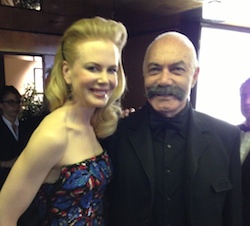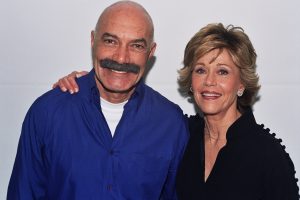Chris Weitz is the director of "The Twilight Saga: New Moon," starring Robert Pattinson and Kristen Stewart. The film is being released November 20 by Summit Entertainment.
Although Weitz was initially unfamiliar with the novels, he quickly became a fan. “I read the books,” the director says. “Then I went to see the first film with an audience, and I was so jazzed by the extraordinarily deep emotional reaction I saw. When I watch a film, I look for an overwhelming sense of being immersed in a universe, and this was a chance to do that. It’s a bit different from what I’ve done before, but it also draws on some of my experience.”
Weitz realized his foremost responsibility was to be faithful to the books. “I worked very, very hard at making sure things were just right in that sense,” he says. “The first film was such a phenomenon. The books were such a phenomenon. My first job was to respect the love that the fans of the books have for the book, and the love they transferred to the movie. There was no need to completely remake the world. We go different places this time, but we still retain respect for the fans.”
Having the author available was invaluable to Weitz. “With Lord of the Rings, no one could ask Tolkien what he originally had in mind,” says the director. “I could email Stephenie and ask practical questions like, ‘Do Jasper’s powers actually work on Bella?’ as well as larger metaphysical questions. It allowed me to make sure that at all points that we were keeping consistent with the books.”?
Central to the story is the friendship that develops between Bella and Jacob Black, a werewolf and natural enemy of the vampires. “The stakes are higher,” says Weitz. “Now it’s not just Bella’s existence that’s in danger, but Edward’s existence as well. In terms of the story’s world, we get a look at new areas and corners of the mythology, and as the mythology expands, so does the movie.
Casting
Weitz came to the project in the unusual situation of knowing who his leading actors would be. “I usually get quite aggressive about casting,” he says. “In this case, I had the good fortune of inheriting this great group of actors that Catherine Hardwicke cast in the first place. The chance to work with them was one of the most exciting parts of the experience.” ?
But not all of the cast members were in place when Weitz sat down in the director’s chair. “There are a few new characters who are on screen for a relatively short time but have incredible impact and punch, and lead into the mythology of the rest of the series,” says Weitz. “I always try to get just the right people no matter what size the role is.” ?
At the beginning of filming, Weitz did something he’d never done before: He distributed a 20-page pamphlet outlining his ideas for the film and the characters. “I called it an orientation guide,” he explains. “The information I gave them was meant to acquaint them with the settings and the style of the movie, so that they knew as much as possible beforehand. That gave us the freedom to improvise on the day. I never want to lock young actors and creative people into decisions that I’ve made, but I like to give them as much to go on as possible.” ?
Visual Style
“The light in the Pacific Northwest provides a great deal of diffusion and coolness,” Chris Weitz says. “Within that, there are plenty of beautiful colors, and our intention was to use the lion’s share of them. Shadows are also important —the forest at night, the blackness of depression. ?
“The light is much different in Tuscany,” Weitz notes. “It has much warmer tones and is literally much sunnier, with pops of color from the costumes. The architecture is different as well. Montepulciano is known for its Renaissance architecture, with remnants of medieval architecture as well.”?
“I love classic, wide-screen epics like Dr. Zhivago and Barry Lyndon,” says Weitz. “I was also thinking about what sorts of paintings made sense for this world. For me, it was narrative painting and pre-Raphaelite works. They share a very strong emphasis on story, on sentiment, on love and loss, heartbreak and longing. These are the paintings that accompanied Tennyson and that whole era of sentimentality. They also revived a jewel-toned palette and treatment of color that made sense to me, that was going to be different from the first movie but would be faithful to the spirit of the second book,” Weitz says.?
That attention to detail and faithfulness to the letter and spirit of Stephenie Meyer’s Twilight series informed the entire production process, says Weitz. “If you loved the characters and the romance of Twilight, if you love the supernatural, The Twilight Saga: New Moon has that and it has more. It expands that world to include the larger mythology that will eventually provide the bridge between Twilight and the third chapter, The Twilight Saga: Eclipse.”










